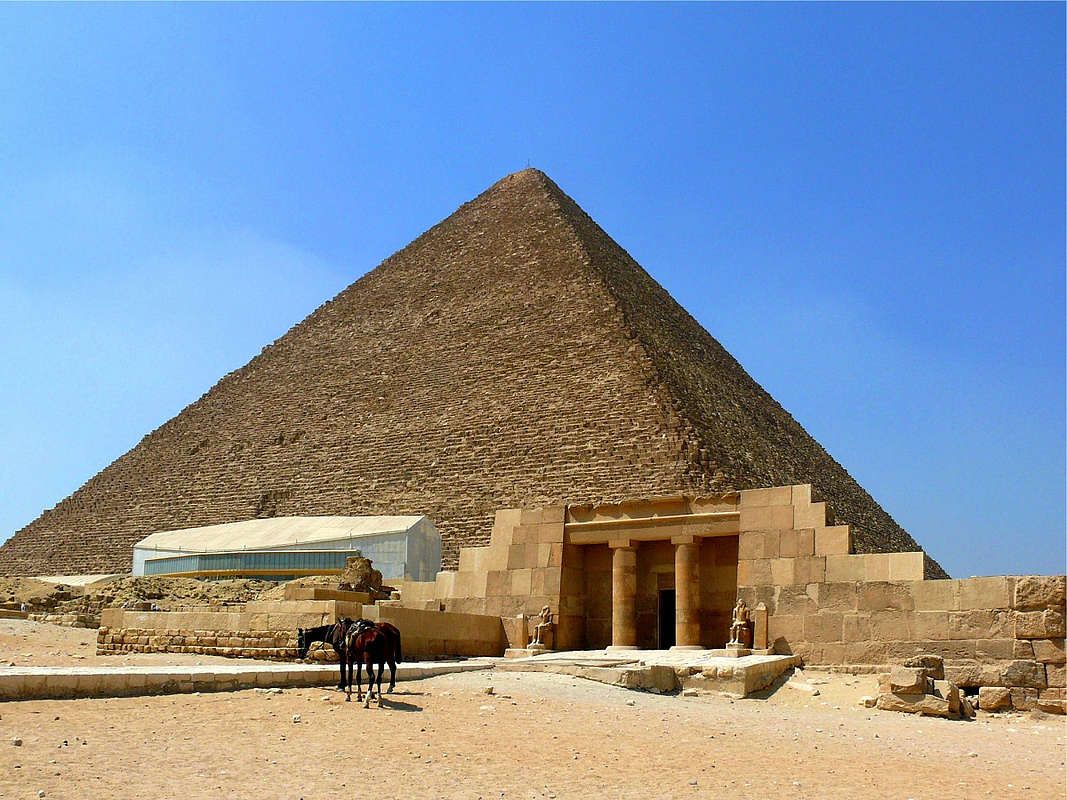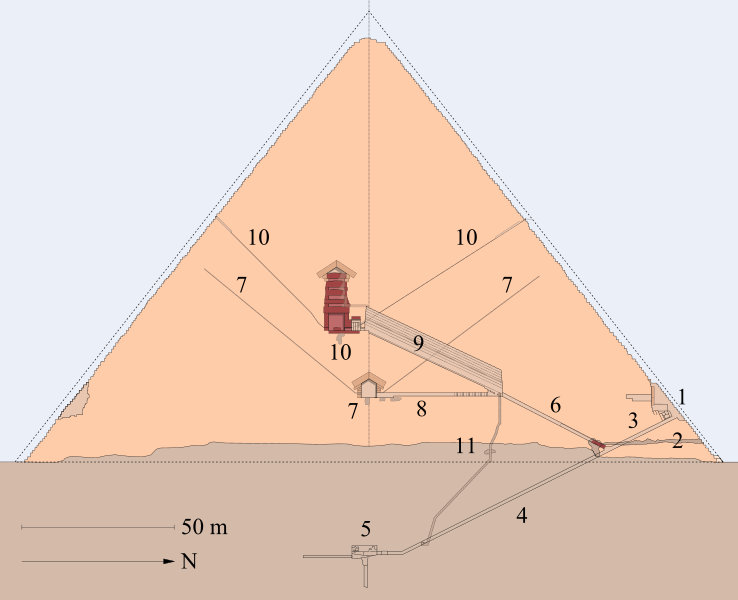
The Great Pyramid, a monumental tomb of Pharaoh Khufu, is situated on the Giza Plateau near Egypt’s capital, Cairo. It is the most powerful Egyptian pyramid and has stirred emotions for years, surrounded by numerous legends.
Former Minister of Antiquities in Egypt, Dr. Zahi Hawass, announced to “The Sun” that he intends to continue researching this enigmatic structure.
Enigmatic Tunnels in the Great Pyramid
Within Khufu’s pyramid, there are four narrow tunnels leading from two chambers inside it, namely the King’s Chamber and the Queen’s Chamber, named during the Arab times. The queen was actually buried in a smaller pyramid nearby. Regarding the King’s Chamber, it’s known that the tunnels lead out to the exterior walls of the tomb.
However, the two shafts leading from the Queen’s Chamber remain a mystery. They have been explored several times using self-propelled robots because they are too narrow for a person to enter. They are square in cross-section and measure approximately 20 by 20 centimeters. They extend upward at a sharp angle for several dozen meters.

Secret Doors in Khufu’s Pyramid
After three decades of research, it’s known that both shafts end, after several dozen meters, with “doors,” or rather, blocks. On these blocks, there are two copper handles or knobs.
In 2002, under the auspices of National Geographic, a block in the southern shaft was drilled through using a robot. A camera was inserted into the hole, revealing a small 20-centimeter void ending in another block, this time without copper handles.
Within this tiny chamber, there are inscriptions made in red paint, presumably left by the architects, detailing technical aspects of the pyramid’s…
What Could Be Behind the “Doors”?
For years, archaeologists have debated the function of the narrow tunnels in the Great Pyramid. They were definitely too small to lead to any chambers.
Though there’s a horizontal distance of about 15 meters from the “doors” to the external wall of the pyramid, the likelihood of a hidden chamber here seems slim. Especially since such chambers were never constructed so high and close to the walls in pyramids. Soon, we might discover the true nature of these features.





